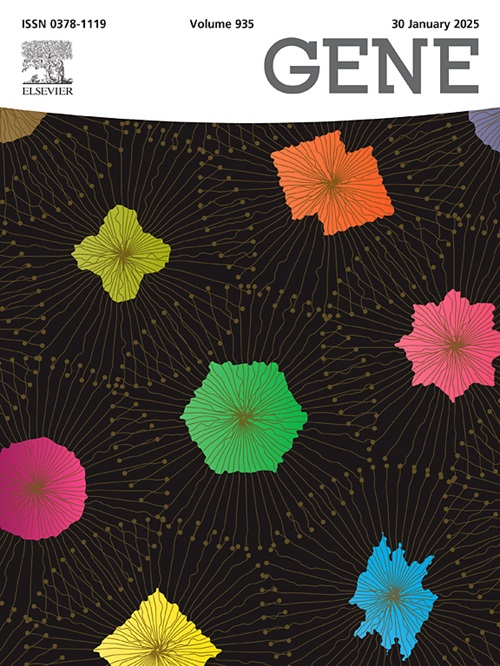血清2-miRNA作为子宫腺肌症的无创诊断生物标志物。
IF 2.4
3区 生物学
Q2 GENETICS & HEREDITY
引用次数: 0
摘要
子宫腺肌症(AM)是一种常见的子宫非癌性疾病,对女性健康有重大影响。尽管其临床重要性,可靠的非侵入性诊断生物标志物的进步尚未实现。本研究旨在探讨血清microRNAs (miRNAs)作为AM诊断的生物标志物的潜在作用。最初的高通量Solexa测序显示,与健康个体相比,AM患者血清中miR-101-3p和miR-143-3p的浓度显著增加。结果随后通过应用绝对定量反转录聚合酶链反应(qRT-PCR)进行验证。受试者工作特征曲线(ROC)下面积(auc)分别为0.881和0.901,表明各miRNA具有较强的诊断潜力。将两种mirna整合到一个panel中时,诊断性能得到显著提高,AUC为0.941。在0.385的特异性阈值下,该面板的敏感性和特异性分别为93.33 %和96.67 %。此外,该小组在区分AM与其他妇科疾病方面表现出出色的区分能力(AUC > 0.9)。值得注意的是,血清miRNA水平和综合评分与AM的主要临床特征呈显著正相关。方法学评估表明,血清mirna在4 °C的长期储存和反复冻融循环后保持稳定。这些结果支持血清2-miRNA作为AM可靠的非侵入性诊断工具,具有提高诊断精度和改善疾病管理的潜力。本文章由计算机程序翻译,如有差异,请以英文原文为准。

Serum 2-miRNA panel as a non-invasive diagnostic biomarker for adenomyosis
Adenomyosis (AM) is a common non-cancerous condition of the uterus that has significant effects on women’s health. Despite its clinical importance, the advancement of dependable non-invasive diagnostic biomarkers has yet to be achieved. This study sought to examine the potential role of serum microRNAs (miRNAs) as biomarkers for the diagnosis of AM. Initial high-throughput Solexa sequencing revealed a significant increase in serum concentrations of miR-101-3p and miR-143-3p in patients with AM compared to healthy individuals. The results were later validated through the application of absolute quantitative reverse transcription polymerase chain reaction (qRT-PCR). Each miRNA demonstrated strong diagnostic potential, as indicated by the areas under the receiver operating characteristic (ROC) curve (AUCs) of 0.881 and 0.901, respectively. The diagnostic performance exhibited notable improvement when the two miRNAs were integrated into a panel, resulting in an AUC of 0.941. At a specific threshold of 0.385, the panel demonstrated sensitivity and specificity rates of 93.33 % and 96.67 %, respectively. Additionally, the panel demonstrated excellent discriminatory power (AUC > 0.9) in distinguishing AM from other gynecological conditions. Notably, serum miRNA levels and the composite panel score exhibited significant positive correlations with key clinical features of AM. Methodological assessments indicated that serum miRNAs remained stable under extended storage at 4 °C and after repeated freeze–thaw cycles. These results support the serum 2-miRNA panel as a reliable, non-invasive diagnostic tool for AM, with potential to enhance diagnostic precision and improve disease management.
求助全文
通过发布文献求助,成功后即可免费获取论文全文。
去求助
来源期刊

Gene
生物-遗传学
CiteScore
6.10
自引率
2.90%
发文量
718
审稿时长
42 days
期刊介绍:
Gene publishes papers that focus on the regulation, expression, function and evolution of genes in all biological contexts, including all prokaryotic and eukaryotic organisms, as well as viruses.
 求助内容:
求助内容: 应助结果提醒方式:
应助结果提醒方式:


